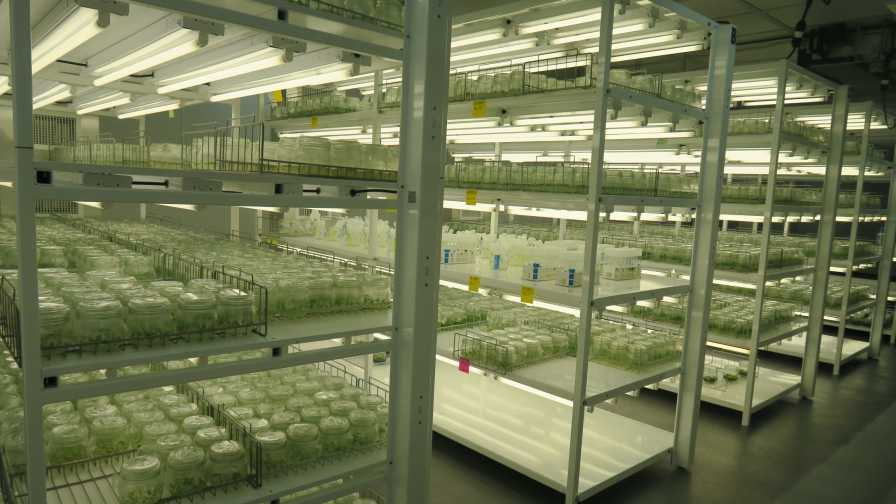Citrus Nurseries Analyze the Need for Seed

When it comes to liners, feedback from Florida citrus nursery operators indicate a marked preference toward seed.
Photo by Peter Chaires
It is a natural curiosity to wonder how Florida will produce enough citrus rootstock liners when a truly revolutionary rootstock comes along.
Growers often ask, “If a highly tolerant or resistant rootstock were identified today, how long would it take until sufficient quantities of seed were available to nurseries, and where might that seed come from? Is seed the best option?”
I reached out to nurseries with a survey, and here is a compilation of the responses:
Q: What are the sources of seed for Florida Nurseries?
A: The responding nurseries indicated that self/internal sources combined with seed from California account for 50% to 90% of seed used. Public sources, including USDA, UF/IFAS, and related research centers, accounted for 4% to 40% of seed used. If we separate the private sources, the responding nurseries indicated that California represented a much larger percentage than self/internal supply.
Q: How long would it take before likely industry demand (for liners) could be satisfied through a combination of public and private seed sources?
A: The nurseries indicated that if they were meeting the demand only with seed (not including tissue culture), it would take two years if they were top-working older seed trees, although many nurseries would be reluctant to top-work outdoor seed source trees. The more likely scenario would be four to five years when aggressively producing and managing new seed trees.
Q: If a new highly tolerant rootstock were identified today, how long would it be until sufficient quantities of budwood could be supplied to nurseries for the purpose of establishing seed block trees?
A: The consensus was that it would take two years for this to occur.
Q: Considering the lag time referenced above: If a highly tolerant rootstock emerges, do you view tissue culture (TC) as the only way to meet demand in the near-term, until seed supply could be established (assuming a year to establish plant material in culture)?
A: Fifty percent of the responding nurseries felt that TC is the only way to go in the near-term. The other 50% said their clients want trees produced from seed, and they would wait until seed was available.
Q: If given a choice, do you prefer to use liners made from TC or seed? Does it matter?
A: The answer to this question was quite interesting. Eighty percent of the responding nurseries prefer a liner from seed. They feel the root structure is better and that the costs are lower due to the price of the TC liner and the number of times it must be handled. However, the other nurseries stated that the more they work with TC liners, the better their results. They feel the quality of the TC liners continues to improve and their techniques for growing them are improving. They also mentioned that they have less issue with trueness to type with TC liners than some liners produced from seed. Several nurseries stated that down the road, they might be producing trees from TC liners in the same amount of time as a tree from seed and with equivalent costs. Most nurseries concede that the likely short-term reliance on TC liners might lead to operational changes that favor TC and consequently, preference may swing in TC’s favor.
Clearly, the answers to such questions will vary from nursery to nursery and each has its own operational preferences. However, real-world pressure would undoubtedly dictate that steps would happen in parallel. If clean rootstock material was available from the outset, and if TC increase material were being established while rootstock budwood was being increased, it is foreseeable that trees could be budded onto the new liners inside of three years and trees from seed could start 12 to 18 months later. This isn’t as fast as a seed duplication machine, but in a world where it’s hard to avoid the fact that live plant material has to go through a growth phase, the advancements of the laboratories and nurseries is nothing short of amazing. Nobody in this business is doing things the same way they did five years ago, and the nurseries are certainly not an exception.










